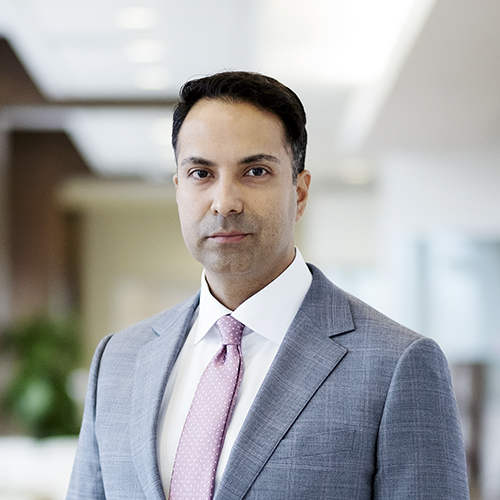|
Getting your Trinity Audio player ready...
|

VP, Chief Learning Officer
Texas Health Resources
Texas Health Resources (THR), one of the largest faith-based nonprofit healthcare systems in the United States, has grown rapidly over its twenty year history. The result is a sprawling organization that has grown to more than 26,000 employees, more than 350 care access points, and the Texas Health Physician Group with more than 6,000 physicians and approximately 600 nurses and physician assistants.
This broad reach is highly effective in providing care to the more than seven million residents of the Dallas/Fort Worth area. However, the aggregation of so many locations and staff also created a decentralized organization with processes and protocols that were not uniform from one facility to the next. In 2015, Daniel Gandarilla assumed the role of chief learning officer with a targeted directive to enable the employees to establish “one Texas Health.”
With senior leadership support, he launched Texas Health Resources University (THRU). It is intended to maximize the performance and potential of the Texas Health workforce. “Our biggest task is challenging students—the employees, physicians, and nurses we train—to understand their roles as stewards of an entire organization,” Gandarilla says.
THRU is well positioned to achieve its objective because it has strong support from top leaders within the organization. Members of the most senior executive team form a cabinet and serve as “deans” and “department chairs” for learning across the different business units. Their involvement has enabled Gandarilla and his team to become well integrated into the business and its operations.
As part of its mission, THRU focuses on five different service lines: clinical education and leadership, academic partnerships and grants, organizational learning and leadership development, physician learning solutions, and learning shared services. These priorities have led to innovations such as a dedicated Operating Room New Graduate Nurse Residency, which trains graduates in the culture and requirements of their new specialties and aligns with the organization’s workforce plans. THRU also created the Talent Acceleration Program, which assess, develops, and mentors high-potential individuals for future roles within the organization. Organizational innovation is supported by engaging physicians in their own leadership development and action learning. This has resulted in collectively developed recommendations for tackling real-world problems, such as how to get physicians in a physician practice home sooner to balance their work and life.
Prior to formation of a single THRU, each one of the business units created its own training, which led to extensive duplication. Now THRU reviews new requests for learning activities against expectations and existing resources and collaborates with other similar units or practices to agree on a common shared approach. The process has helped standardized everything from new hire orientation to training for administering EKGs and helped optimize resources, such as consolidating fourteen modules of stroke education down to three.
“We have an obligation and commitment to provide the best possible professional learning and development to our care teams. As we strive to live up to that, keeping up with the rate of ongoing change in technology, educational platforms, and in healthcare is what keeps me up at night.”
Over the past year THRU has placed particular emphasis on providing the greatest value possible through introducing new programs and reducing cost. For example, training for the two-year renewal of Basic Life Support and Advanced Cardiac Life Support certifications was streamlined by introducing the American Heart Association’s Resuscitation Quality Improvement program, which places mobile, computerized mannequin skills-stations in nursing units. This is expected to save the organization $750,000 annually.
THRU also identifies programs that might no longer be appropriate to the evolving healthcare environment. That was the case when it ended a partnership with a local community college to provide associate degrees in nursing because THR now focuses on bachelor’s degree-prepared nurses.
To date, these types of changes have saved the organization more than $3 million.
“THRU is dedicated to standardizing and centralizing our processes, but we also focus on maximizing the performance of our people so they can reach their full potential,” Gandarilla says. “We want them to serve the best interests of the patients and families that come to us for care.”
In addition to improving both management and clinical capabilities and outcomes, all THRU initiatives help address broader staffing and retention issues. “One of our gauges of success is how many of the staff we train stay with us,” Gandarilla says. “We’re on track to meet our goal of developing the right people for the right jobs so that we can fill 75 percent of leadership job openings internally.”
With so many staff members moving to new jobs within the system, THRU recently implemented a transition support program to help leaders adapt to new roles and skill sets as they transition to higher level positions. Through the program, THRU staff assists them in crafting transition plans based on their prior experience and input from their new managers.
Gandarilla’s responsibilities go beyond establishing training to help create one Texas Health. By incorporating new learning technologies, he also ensures that the organization establishes a learning culture that develops managers’ capabilities while also moving the organization forward. The majority of training is currently instructor-led, but it will increasingly shift toward web-based instruction and newer technologies, such as augmented and virtual reality. The learning department is also looking at new systems that can curate learning, such as learning experience platforms that use algorithms to identify topics that individuals are already exploring and recommend related and complementary topics. This is expected to reduce search cost by connecting more resources through a single portal. More and more offerings will also provide access from mobile devices.
“We have an obligation and commitment to provide the best possible professional learning and development to our care teams,” Gandarilla says. “As we strive to live up to that, keeping up with the rate of ongoing change in technology, educational platforms, and in healthcare is what keeps me up at night.”

